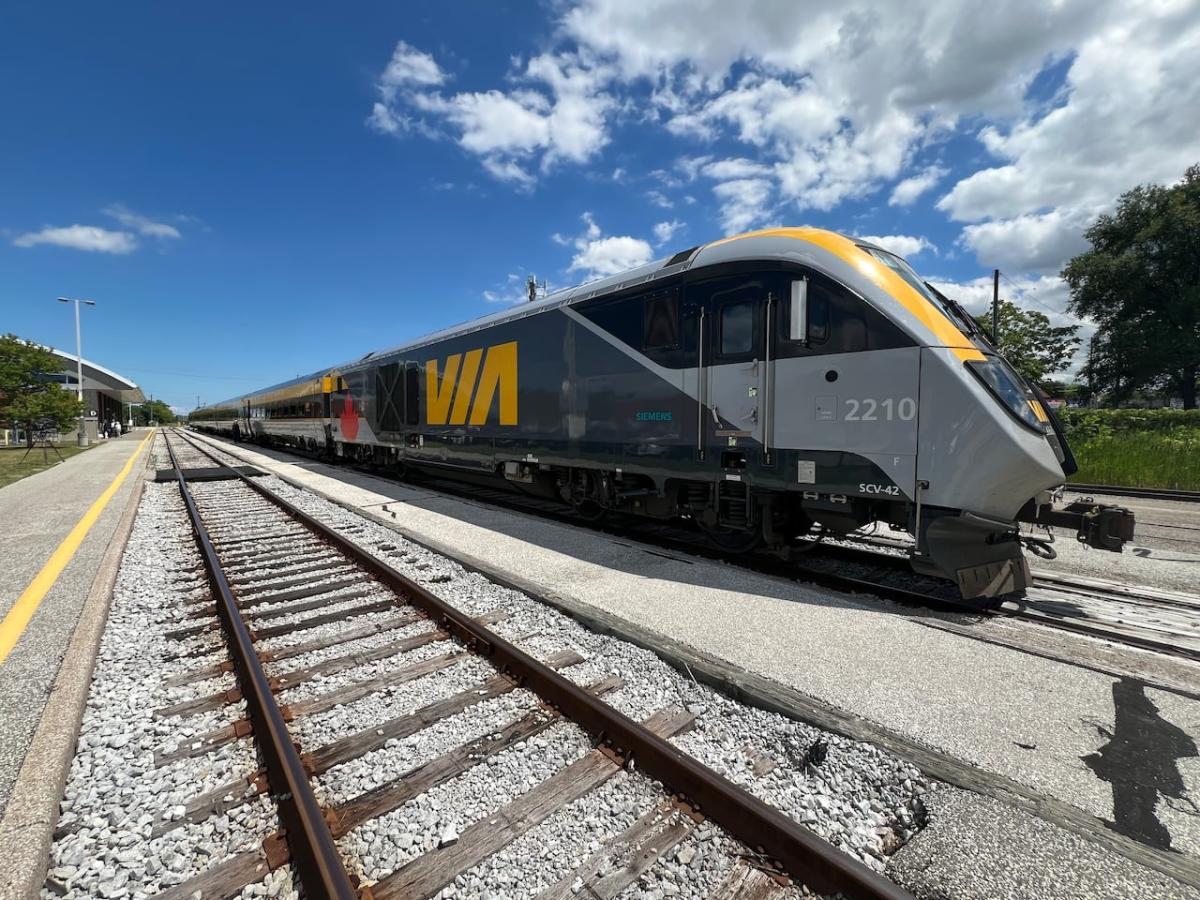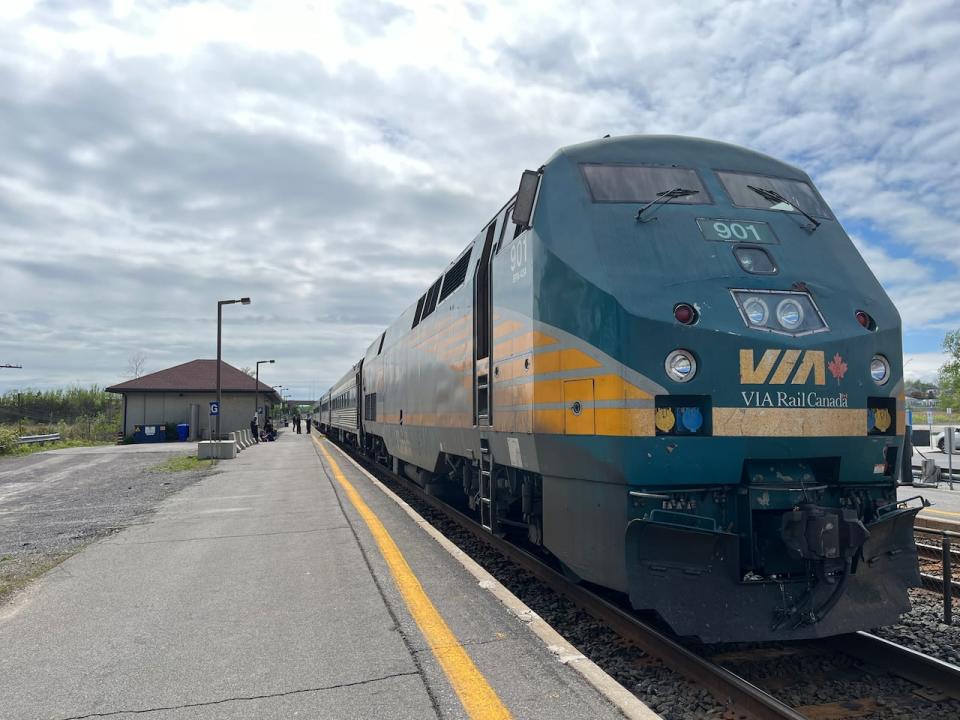Infra
Could new rail line be ‘costly boondoggle’ or economic boon for Toronto?

Toronto’s budget chief is urging her fellow councillors to dig into a federal plan for a new passenger rail line to Quebec City, even as experts stress they’d like the city to push for more transparency around the multi-billion dollar project.
Officials from a VIA Rail subsidiary briefed city councillors on the economic development committee this week about the federal efforts to build the 1,000-kilometre rail line from Toronto to Quebec City. The project is intended to cut current travel times and offer more trips, largely by building dedicated rail tracks that take passenger trains off the current lines shared with freight carriers.
Coun. Shelley Carroll, who serves as the city’s budget chief, said she invited the Crown corporation representatives to the meeting to provide an update, because people — including council itself — aren’t aware of the planned line.
“I wanted our committee to know how far down the track, pardon the pun, that is,” she said. “It’s a big part of economic development for this mega-region.”
LISTEN | Checking in on the Via High Frequency Rail project:
In 2021, the federal government announced its plan to build the “high frequency” line with stops in Toronto, Peterborough, Ottawa, Montreal, Trois-Rivières, Laval and Quebec City. At the time, Minister Omar Alghabra said it could cost between $6 and $12 billion. A subsidiary of VIA Rail was created to oversee development of the project.
In February 2023, three qualified bidders were selected to create detailed designs. One will be selected to build and operate the project. Those submissions are now being evaluated by the federal government and a decision is expected next year.
The line is expected to run almost entirely on newly built rail corridors and not those currently owned by the CP or CN Rail. Ottawa hopes to have it in operation by the mid-2030s.
Vinay Sharda, Via Rail’s vice president of local government and community partnerships, told the committee the trains are expected to run up to 200 km/hour and cut travel times in half on certain routes.
But the firms bidding on the project have also included plans that would provide the federal government the option to build the more expensive, but faster, high-speed rail. Those trains can travel at speeds as high as 300 km/hour.
“We are the only G7 country that does not have something of this type of speed and this type of solution,” Sharda said of the high frequency rail project.
Carroll stressed that it’s her expectation that the city will not be required to contribute to the project financially. But she is hoping city councillors can advocate for community benefits as the line is built, including employment opportunities for under-represented workers.
“We provide a terminus point, but we don’t generally contribute to projects that are city to city to city,” she said. “What we do contribute in, is an effort in how we fit it into the landscape, how we protect the environment as it moves through. So, we will end up in the process at some point.”
But some experts say they’re not convinced that Toronto will completely escape some financial responsibility for local infrastructure that could connect to a potential line. And they’re expressing concern about the lack of detail surrounding the proposal.

Expert says they’d like VIA Rail and the federal government to release more details about the project. Earlier estimates put the cost of the project between $6 and $12 billion. (Jennifer Chevalier/CBC)
Experts urge want project financials, alignment released
Murtaza Haider, director of Toronto Metropolitan University’s Urban Analytics Institute, said he’s concerned about the lack of transparency around a project, which will require tens of billions of dollars in funding from Canadians.
He said he hopes that once the procurement process is finished detailed plans, including engineering and economic analysis, will be publicly released.
“Don’t hide your proposals,” Haider said. “If you want massive support for these proposals and projects, then trust the taxpayers whose money you will use.”
Matti Siemiatycki, director of University of Toronto’s Infrastructure Institute, said he can understand skepticism from people about the viability of the project. Numerous high speed rail lines have been contemplated for decades in this corridor, and none have been completed.
But Siemiatycki is quick to point out that this proposal has moved further along in development than any of the others. If done correctly, he said, this could be a major economic driver for the region.
“This could be a really important move or — depending on how it’s designed — it could do very little and be a costly boondoggle,” he said.
“There’s really a lot at stake here.”
Siemiatycki said he would like to see city councillors press the federal government and VIA Rail for more details.
“VIA and everyone involved in this needs to be very public about what this project is going to be, for the simple reason that it’s going to cost a lot of money, and it’s going to be public money,” he said.
LISTEN | Meet the man trying to cut travel time from Toronto to Montreal in half:
Siemiatycki said he can also understand concern from City Hall, as councillors press the federal government to complete billions in transit projects within Toronto. This project could cut into the funding pie Toronto is trying to draw from, he said.
“High speed or high frequency rail is likely to require subsidies for the long term,” he said. “This could ultimately potentially siphon money away from operating expenditures and capital money for local public transit, because we’re now feeding this intercity rail line.”
VIA High Frequency Rail spokesperson Benoit Bourdeau said the Crown corporation is doing its homework before announcing routes, numbers and schedules
“We firmly believe in ‘hurrying with caution,’ which involves progressing decisively while avoiding hasty decisions to reduce risk and achieve the best project outcome,” he said in a statement.










